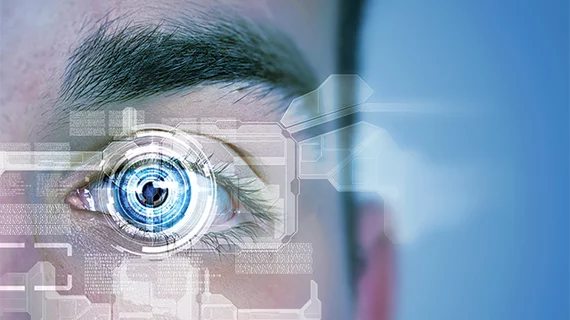University of Minnesota researchers create ‘bionic eye’ prototype
For people who are blind or have vision problems, a bionic eye offers a chance for restored or improved vision. That hope just got a little closer to reality with the creation of a 3D-printed prototype of a bionic eye.
A research team at the University of Minnesota in Minneapolis 3D-printed an array of light receptors on a hemispherical surface, according to a press release from the university.
To create the prototype, the team used a hemispherical glass dome, custom-built 3D printer and a base ink of silver particles. According to the release, the ink stayed in place and dried uniformly on the hemispherical surface. They then used semiconducting polymer materials to print photodiodes.
The team was also able to achieve 25 percent efficiency in converting the light into electricity with the fully 3D-printed semiconductors, the release said. The team is now hoping to create a prototype with more light receptors that are more efficient and find a way to print on a soft hemispherical material that can be implanted into a real eye.
“Bionic eyes are usually thought of as science fiction, but now we are closer than ever using a multi-material 3D printer,” Michael McAlpine, co-author of the study and University of Minnesota associate professor, said in a statement.
“We have a long way to go to routinely print active electronics reliably, but our 3D-printed semiconductors are now starting to show that they could potentially rival the efficiency of semiconducting devices fabricated in microfabrication facilities.”

